In the dynamic digital milieu of India, the craft of blog writing has blossomed into a potent conduit for expression, connection, and impact. As the calendar turns to 2023, the domain of blogging in India brims with vitality, opening expansive avenues for aspiring writers, visionary entrepreneurs, and impassioned enthusiasts to etch their identities, relay personal narratives, and weave connections within a diverse audience landscape.
Why India Loves Blogs?

- Voice of Change: Blogs aren’t just echoes of information; they’re trumpets heralding societal shifts. They carry the seeds of change, advocating for causes, sparking discussions on social issues, and mobilizing communities towards collective action and awareness.
- Global Connections: Beyond borders, blogs are bridges connecting cultures and minds. They dissolve geographical barriers, allowing people from diverse backgrounds to share experiences, perspectives, and wisdom, fostering a global conversation.
- Creative Expression: They’re canvases for artistic expression, where words, visuals, and multimedia intertwine to craft compelling narratives, beautiful aesthetics, and immersive experiences that evoke emotions and stir imaginations.
- Educational Supplements: These digital scrolls often supplement formal education. They offer supplementary knowledge, practical insights, and real-life experiences that complement traditional learning, providing a more holistic understanding of subjects.
- Entrepreneurial Platforms: Beyond careers, blogs birth entrepreneurial endeavors. They ignite entrepreneurship, becoming launchpads for startups, showcasing innovations, and offering platforms to transform ideas into tangible businesses.
- Inclusive Spaces: Blogs echo the voices often unheard, championing inclusivity by providing platforms for marginalized communities, offering representation, amplifying diverse voices, and fostering inclusiveness in the digital sphere.
- Evolving Trends: They’re dynamic mirrors reflecting ever-evolving trends. Blogs adapt to changing tastes, tech innovations, and societal shifts, evolving alongside readers’ preferences and technological advancements.
- Interactive Learning: Going beyond passive consumption, blogs encourage interactive learning through quizzes, polls, and interactive content formats, engaging audiences in a more participative and immersive learning experience.
- Digital Advocacy: They’re digital activists, rallying for causes, whether environmental, social, or political. Blogs raise awareness, mobilize support, and encourage action, becoming catalysts for positive change.
Steps Involved in Blogs in 2023:
Step 1: Define Your Blog Niche and Audience

India, with its diverse culture, offers an array of interests and passions that can be targeted for a successful blog. Identifying a niche aligned with the preferences of the Indian audience is key to capturing their attention and building a dedicated readership.
Understanding Indian Audience Preferences:
- Travel within India: India’s rich heritage, diverse landscapes, and cultural tapestry make travel a prominent niche. Focusing on destinations, local experiences, offbeat locations, and travel tips specific to Indian travelers can attract a wide audience.
- Indian Cuisine: The culinary diversity in India is immense. Exploring regional cuisines, recipes, food history, and culinary traditions can captivate food enthusiasts across the country.
- Technology Startups in India: India’s burgeoning startup ecosystem offers a wealth of stories, innovations, and insights. Covering success stories, emerging trends, and the tech landscape appeals to the entrepreneurial and tech-savvy Indian audience.
- Traditional Indian Art Forms: India boasts a rich heritage of art, including dance, music, painting, and handicrafts. Providing insights, tutorials, stories behind art forms, or interviews with artisans can intrigue art aficionados.
Tailoring Content for the Indian Audience:
- Cultural Context: Incorporate cultural references, festivals, and traditions that resonate with Indians. Understanding regional nuances and preferences enhances relatability.
- Localized Content: Offer localized content by spotlighting lesser-known places, dialects, or customs specific to different regions within India.
- Language Diversity: Considering India’s linguistic diversity, bilingual or multilingual content can expand your reach. Publishing in English and a regional language could attract a broader audience.
- Engagement and Interaction: Encourage interaction through comments, surveys, or social media engagement to understand audience preferences better.
Step 2: Choose a Blogging Platform

1. WordPress.org
- Flexibility and Customization: WordPress.org offers unparalleled flexibility. It provides access to a vast array of themes, plugins, and customization options, allowing you to create a highly tailored website that perfectly fits your niche and audience preferences.
- Community and Support: With a massive community of users and developers, WordPress.org ensures continuous support, updates, and a plethora of resources for troubleshooting and expanding your blog.
- SEO-Friendly: Its SEO capabilities, along with plugins like Yoast SEO and Rank Math, empower users to optimize content for better search engine rankings, crucial for gaining visibility in India’s competitive online space.
2. Blogger
- Simplicity: Blogger, owned by Google, is known for its user-friendly interface and straightforward setup process. It’s a great choice for beginners seeking simplicity in blogging.
- Google Integration: Given its affiliation with Google, Blogger seamlessly integrates with other Google services like AdSense and Analytics, offering potential monetization options and insights.
3. Wix
- Intuitive Drag-and-Drop Interface: Wix stands out for its intuitive drag-and-drop editor, ideal for those without technical expertise. It allows for quick website creation and customization.
- Design Templates: Wix offers a variety of visually appealing design templates catering to different niches, enabling you to create an aesthetically pleasing blog.
Considerations for Indian Audience:
- WordPress’s Versatility: For a diverse audience like India, WordPress’s flexibility can accommodate content catering to various regional interests and languages.
- Accessibility and User-Friendliness: Blogger and Wix might be more suitable for beginners or those prioritizing ease of use, especially if you’re aiming for a quick setup.
- Scalability and Future Growth: While Blogger and Wix offer simplicity, WordPress’s scalability allows for more comprehensive growth, accommodating evolving needs and expanding audiences.
Step 3: Select a Domain Name and Hosting
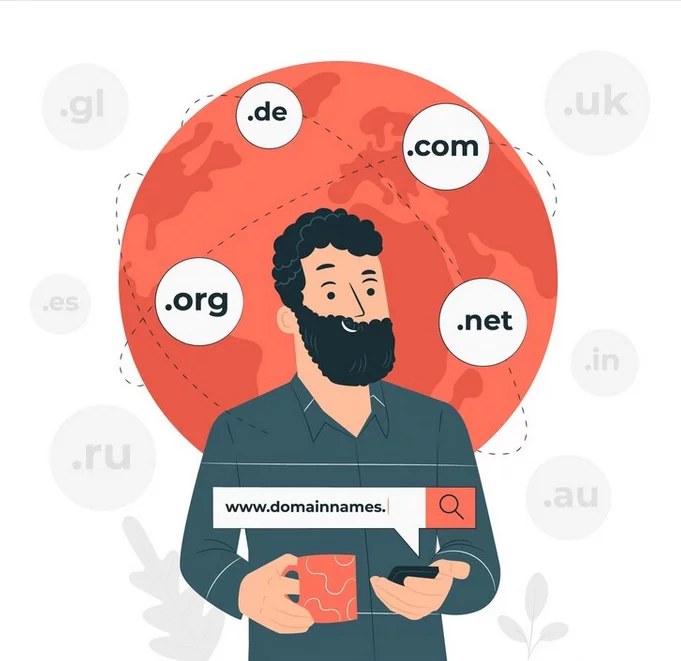
1. Domain Name Selection
- Utilizing Domain Name Generators: Platforms like DomainWheel or Lean Domain Search aid in brainstorming unique, brandable, and memorable domain names. These tools offer suggestions based on your keywords, helping you find an available domain that resonates with your blog’s theme.
- Considerations for a Domain Name: Aim for a name that reflects your niche, is easy to spell, and memorable. Reflect on keywords related to your blog’s content, ensuring it’s relevant and resonates with your Indian audience.
2. Web Hosting Providers
- Hosting Providers: Consider localized hosting services offered by providers like Nestify. These companies offer servers in India, optimizing loading times for your Indian audience and providing localized customer support.
- Factors for Consideration: Assess hosting plans based on factors like server reliability, uptime, customer service, security features, and scalability. Understanding your blog’s needs and anticipated traffic volume is crucial in selecting an appropriate hosting plan.
Importance of Localized Services
- Localized Domain: Having a domain extension like “.in” can enhance the blog’s connection with Indian users, potentially improving search engine rankings within the country.
- Server Location: Opting for hosting with servers physically located in India ensures faster loading times for Indian visitors, enhancing user experience and SEO performance within the Indian market.
Step 4: Set Up Your Blog with WordPress

1. Easy Page Building with Elementor
- Intuitive Page Building: Elementor, a popular WordPress page builder, offers an intuitive drag-and-drop interface. It simplifies website creation, allowing you to design pages easily without needing extensive technical knowledge. Its real-time editing feature enables you to see changes instantly, aiding in quick customization.
- Templates and Customization: Elementor provides a variety of templates and design elements that suit various niches. Its extensive library ensures flexibility in creating visually appealing and responsive web pages tailored to your Indian audience’s preferences.
2. Optimizing Content with Yoast SEO
- SEO Optimization: Yoast SEO is a powerful WordPress plugin that assists in optimizing content for search engines. It offers real-time suggestions for improving readability, focus keywords, meta descriptions, and overall content quality, essential for better visibility in India’s competitive online landscape.
- Localization Features: Yoast SEO includes features that help optimize content for local searches. Its functionality allows for targeting specific keywords relevant to the Indian audience, aiding in better search engine rankings within the region.
3. Enhanced Website Security with Wordfence Security
- Robust Security Measures: Wordfence Security is a comprehensive security plugin that fortifies your WordPress site against threats. It includes firewall protection, malware scanning, login security, and monitoring features, crucial for safeguarding your blog’s data and user information, particularly in India’s growing online security landscape.
- Threat Detection and Blocking: Wordfence actively scans for potential security vulnerabilities and malicious traffic, blocking threats in real-time. This proactive approach ensures a secure environment for your Indian audience to engage with your blog content without concerns about security risks.
Tailoring for the Indian Audience
- Localized Content Optimization: Utilize Yoast SEO to target keywords and optimize content that resonates with Indian users, including language variations and culturally relevant terms.
- User-Friendly Interface: Elementor’s intuitive interface aids in creating user-friendly, visually appealing web pages, considering Indian users’ preferences for engaging and easy-to-navigate websites.
- Security and Trust: Implementing robust security measures with Wordfence Security assures Indian users of a safe browsing experience, vital for building trust and credibility.
Step 5: Create Compelling Content

1. Leveraging Local Stories and Cultural Nuances
- Cultural Relevance: Incorporating local stories, traditions, festivals, and cultural nuances specific to different regions in India adds depth and authenticity to your content. It resonates with Indian audiences, fostering a stronger connection and engagement.
- Current Events and Trends: Staying updated with current events and trends in India allows you to create timely and relevant content. Covering topics related to technology, entertainment, socio-cultural issues, or regional developments captures the interest of Indian readers.
Tools for Content Creation:
- Grammarly: Utilize Grammarly for grammar checks and enhancing the overall readability and quality of your content. It ensures that your posts are well-written and error-free, contributing to a more professional and polished appearance.
- Google Trends: Google Trends is an invaluable tool for content ideas and understanding what topics are currently trending or gaining interest in India. It aids in crafting content that aligns with popular searches and user interests.
Step 6: Optimize for SEO and User Experience

1. Keyword Research with SEMRush or Ahrefs
- SEMRush or Ahrefs: These tools offer comprehensive keyword research capabilities, helping you identify relevant keywords and topics that are trending or have significant search volume among Indian users. Incorporating these keywords strategically enhances your content’s visibility in Indian search results.
2. Image Optimization with Smush
- Smush: Optimize images with Smush to ensure faster page loading times, crucial for user experience. This plugin compresses and optimizes images without compromising quality, benefiting users with slower internet speeds, which can be prevalent in some areas of India.
3. Mobile-Friendly Content with AMP for WP
- AMP for WP: Creating mobile-friendly content is imperative for an audience in India, where mobile internet usage is prevalent. AMP for WP facilitates the creation of Accelerated Mobile Pages (AMP), improving loading speeds on mobile devices and positively impacting user experience.
Tailoring for the Indian Audience:
- Local Keywords and Trends: Utilizing tools for keyword research and staying updated with Google Trends ensures that your content addresses topics and keywords relevant to the Indian audience.
- Optimized Images and Mobile Experience: Prioritizing image optimization and mobile-friendly content caters to the needs of users accessing your blog through mobile devices, which is common in India.
Step 7: Monetize Your Blog

1. Engaging with Indian Affiliate Programs
- Cuelinks and VCommission: Consider affiliating with Cuelinks or VCommission for affiliate marketing. These platforms offer partnerships with Indian brands, enabling you to promote their products or services through your blog and earn commissions for referrals.
- Collaboration with Indian Brands: Collaborating directly with Indian brands that align with your blog’s niche provides opportunities for sponsored content, partnerships, or product reviews, facilitating monetization.
- Digital Product Sales via Instamojo: Utilize platforms like Instamojo for selling digital products such as e-books, courses, or guides tailored for an Indian audience. This enables additional revenue streams from your blog.
Step 8: Promote Your Blog
1. Utilizing Social Media Platforms
- Instagram, Facebook, and Twitter: Leverage these platforms for blog promotion. Share engaging content, snippets, or teasers from your blog posts. Engage with Indian users by participating in conversations, sharing insights, and fostering a community around your blog’s niche.
- Visual Graphics with Canva: Create visually appealing graphics or promotional material using Canva. Visual content tends to perform well on social media platforms and can effectively capture the attention of your Indian audience.
2. Engaging with Local Communities
- Reddit India and Quora: Actively participate in discussions and share your blog content on platforms like Reddit India and Quora. Engaging with these communities allows you to share insights, answer questions related to your blog’s niche, and drive traffic back to your blog.
Step 9: Stay Updated and Engage with Your Audience

1. Utilizing Analytics Tools like Google Analytics
- Google Analytics: Gain insights into your audience’s behavior, preferences, and demographics. Analyzing these metrics helps in refining your content strategy to better cater to your Indian audience’s interests.
2. Encouraging Engagement
- Comment Sections and Forums: Foster engagement by actively responding to comments on your blog posts. Engage with users in forums or discussion threads related to your niche, encouraging discussions and sharing insights.
- Email Newsletter via Mailchimp: Create an email newsletter using Mailchimp to regularly update subscribers about new blog posts, exclusive content, or promotions. Building an email list enables direct communication with your Indian audience.
Tailoring for the Indian Audience:
- Localized Monetization Methods: Engaging with Indian affiliate programs and brands resonates more with an Indian audience and boosts monetization prospects.
- Cultural-Relevant Promotion: Tailoring social media content, graphics, and interactions with local communities ensures a more relatable and engaging promotion strategy in India.
- Audience-Centric Engagement: Analyzing user behavior through analytics and fostering engagement through comments, forums, and newsletters keeps your content aligned with your Indian audience’s preferences and interests.
Step 10: Legal and Compliance Aspects

1. Compliance with Information Technology Rules
- Information Technology (Intermediaries Guidelines) Rules, 2021: Ensure compliance with these regulations concerning content, user-generated content moderation, and liability of intermediaries in India. Adhering to these rules helps in avoiding legal issues related to content on your blog.
- Plugins for Legal Compliance: Utilize plugins such as GDPR Cookie Consent or WP Legal Pages to ensure your blog meets legal requirements regarding data protection, privacy policies, and cookie consent as mandated by regulations.
Importance of Legal Compliance:
- Risk Mitigation: Abiding by legal regulations mitigates the risk of facing legal consequences or penalties related to content or data handling, ensuring a secure and lawful operation of your blog in India.
- User Trust: Demonstrating legal compliance through policies and consent mechanisms enhances user trust, encouraging visitors to engage with your blog content, especially in a region like India, where legal and privacy concerns are increasingly significant.
Real Life Indian Blogs:
1. Wander With Jo:

- About: Jo’s travel blog revolves around exploring lesser-known destinations within India, offering insights, travel tips, and personal experiences.
- Success Factors: Wander With Jo stands out by uncovering hidden gems and unique travel escapades, resonating deeply with travel enthusiasts seeking offbeat experiences across India. Jo’s firsthand accounts and detailed exploration allure readers passionate about unconventional travel.
2. Archana’s Kitchen:

- About: Archana’s Kitchen is a prominent food blog in India, specializing in traditional Indian recipes and promoting healthy eating habits.
- Success Factors: This blog caters to food enthusiasts seeking authentic Indian cuisine and nutritional guidance. Archana’s Kitchen has carved a niche by delivering diverse recipes, emphasizing healthy ingredients and traditional cooking methods. Its focus on maintaining the essence of Indian culinary heritage has amassed a loyal readership seeking balanced and wholesome meals.
3. Trak.in:
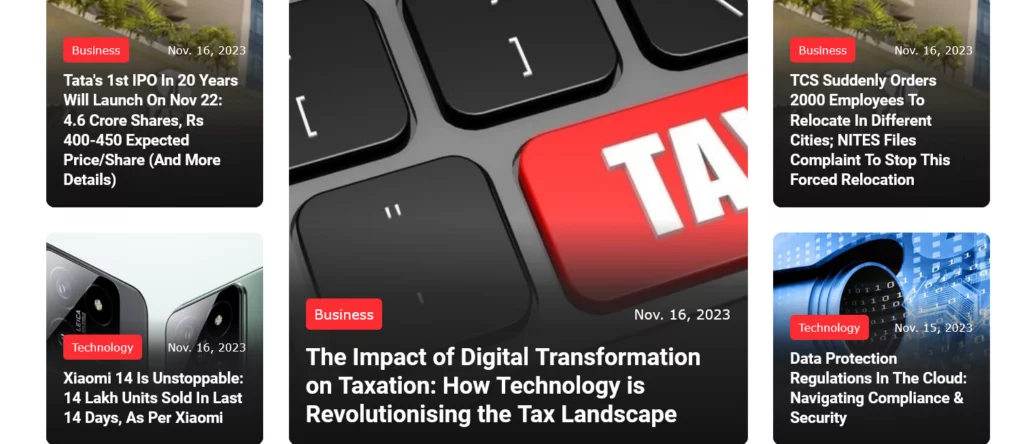
- About: Trak.in is a notable tech and business blog, offering insights into India’s startup ecosystem and corporate landscape.
- Success Factors: Recognized for its comprehensive coverage of technological advancements, market analysis, and updates within India’s entrepreneurial sphere, Trak.in has become an essential resource for industry professionals and aspiring entrepreneurs. The blog’s detailed market insights and informative content aid in understanding India’s business landscape and emerging trends.
4. YourStory:

- About: YourStory is a prominent media platform covering stories of entrepreneurship, startups, and innovation in India.
- Success Factors: Renowned for its in-depth coverage of entrepreneurial journeys, YourStory showcases success stories, insights, and trends in the Indian startup ecosystem. It provides a platform for emerging entrepreneurs and investors, offering valuable insights into the world of startups and innovation.
5. MissMalini:
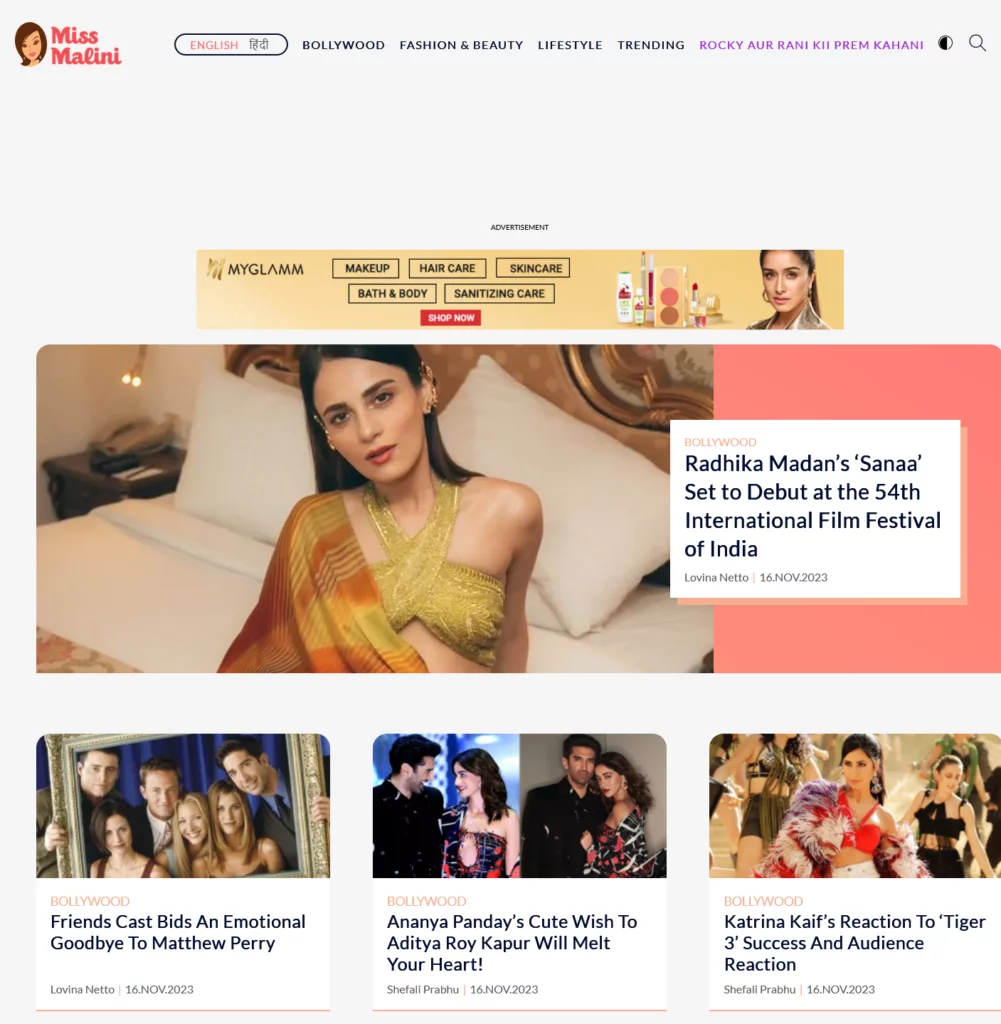
- About: MissMalini is a popular entertainment and lifestyle blog focusing on Bollywood, fashion, beauty, and lifestyle trends in India.
- Success Factors: With its focus on entertainment gossip, fashion tips, and lifestyle trends, MissMalini captures the attention of a wide audience interested in Bollywood, celebrity news, and lifestyle content. Its engaging storytelling and vibrant content resonate with enthusiasts of Indian entertainment and fashion.
6. ShoutMeLoud:
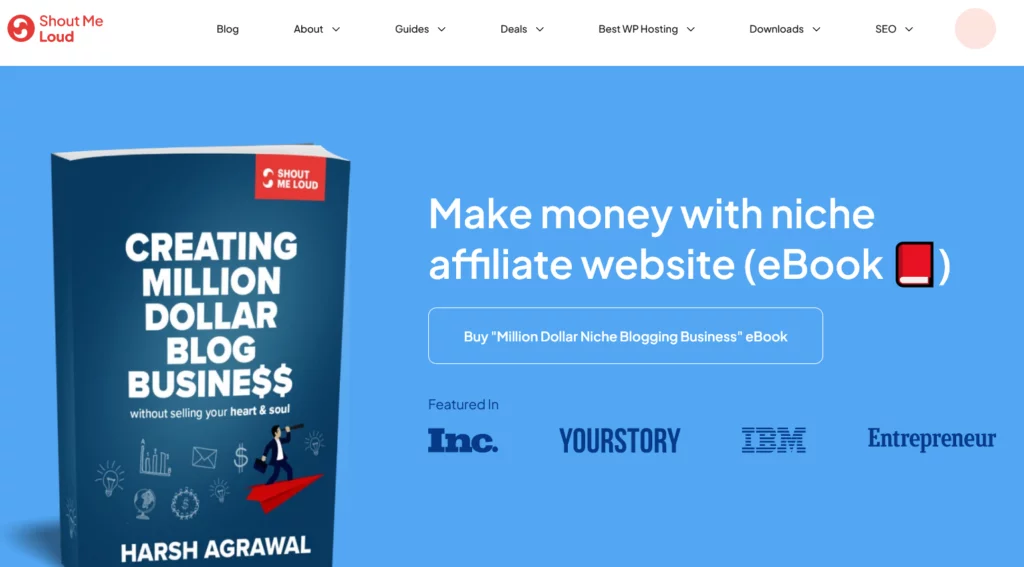
- About: ShoutMeLoud is a popular resource blog focusing on blogging, SEO, WordPress, and online marketing tips.
- Success Factors: Known for its comprehensive guides, tutorials, and tips for bloggers and digital marketers, ShoutMeLoud serves as a go-to platform for individuals looking to start or improve their online presence. It offers valuable insights into blogging, SEO strategies, and WordPress-related information.
7. The Better India:
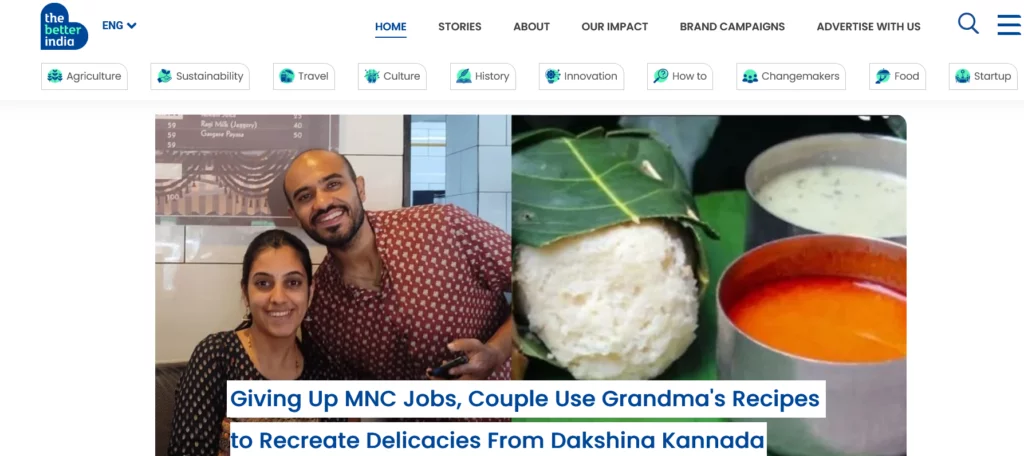
- About: The Better India is a positive journalism platform highlighting inspiring stories of change, social impact, and innovation across India.
- Success Factors: By showcasing stories of change-makers, social initiatives, and grassroots innovation, The Better India inspires readers with uplifting narratives about India’s positive development. It focuses on impactful stories that drive social change and highlight the nation’s positive strides in various domains.
Conclusion:
Blogging in India has witnessed exponential growth, becoming a powerful medium for expression, information dissemination, and even a source of income for many. The diverse culture, rich heritage, and rapidly expanding digital landscape have created a fertile ground for bloggers across various niches, be it travel, food, fashion, technology, or lifestyle.
With increasing internet penetration and the availability of affordable smartphones, blogging has become more accessible to a wider audience. Content creators are leveraging social media platforms, SEO strategies, and engaging content formats to reach and engage with their audience effectively.
However, amidst the growth, challenges like content originality, monetization, and navigating legal and ethical considerations persist. To succeed, bloggers need to maintain authenticity, continually innovate, and stay abreast of changing trends and algorithm.
FAQs on Blogging in India:
Do I need any specific qualifications to start a blog in India?
No formal qualifications are required to start a blog. Passion, knowledge, and dedication to your chosen niche are more important. However, basic writing skills, understanding of online platforms, and some technical know-how might be beneficial.
Is blogging a viable career option in India?
Yes, blogging can be a viable career option in India. Many successful bloggers earn through various monetization strategies such as ads, sponsored content, affiliate marketing, selling digital products, or offering services.
How can I monetize my blog in India?
There are several ways to monetize a blog in India, including display advertising, affiliate marketing, sponsored posts, selling digital products or courses, offering consulting services, and memberships or subscriptions.
Are there any legal considerations for bloggers in India?
Bloggers should adhere to copyright laws, disclose sponsored content, follow advertising standards set by the Advertising Standards Council of India (ASCI), and respect privacy laws when collecting user data.
How can I drive traffic to my blog in India?
Utilize SEO (Search Engine Optimization) techniques, share content on social media platforms, engage with your audience through comments and discussions, collaborate with other bloggers or influencers, and consider guest posting on relevant websites.
Which niches are popular among Indian bloggers?
Popular blogging niches in India include travel, food, fashion, technology, health and fitness, personal finance, lifestyle, and education.



